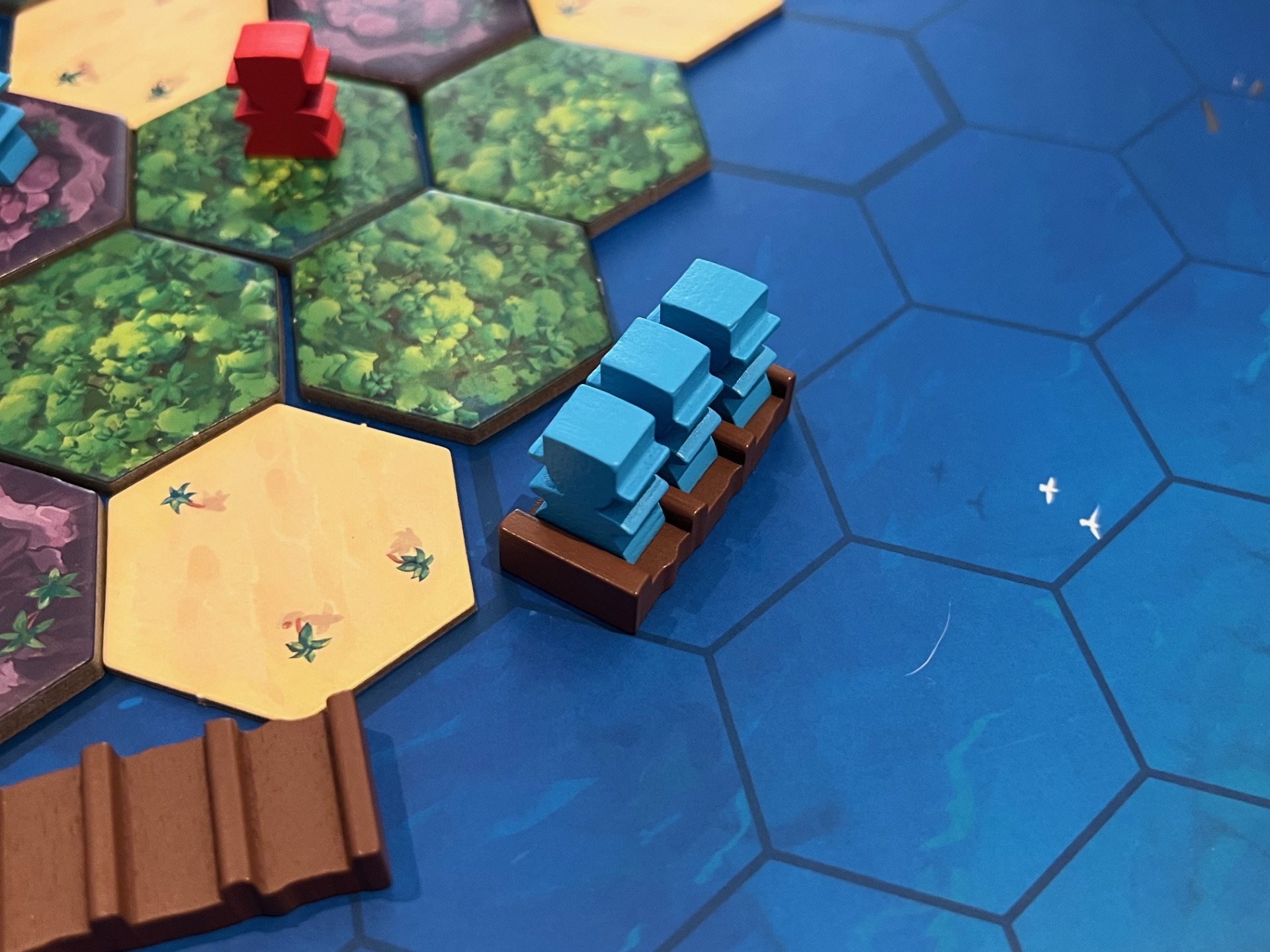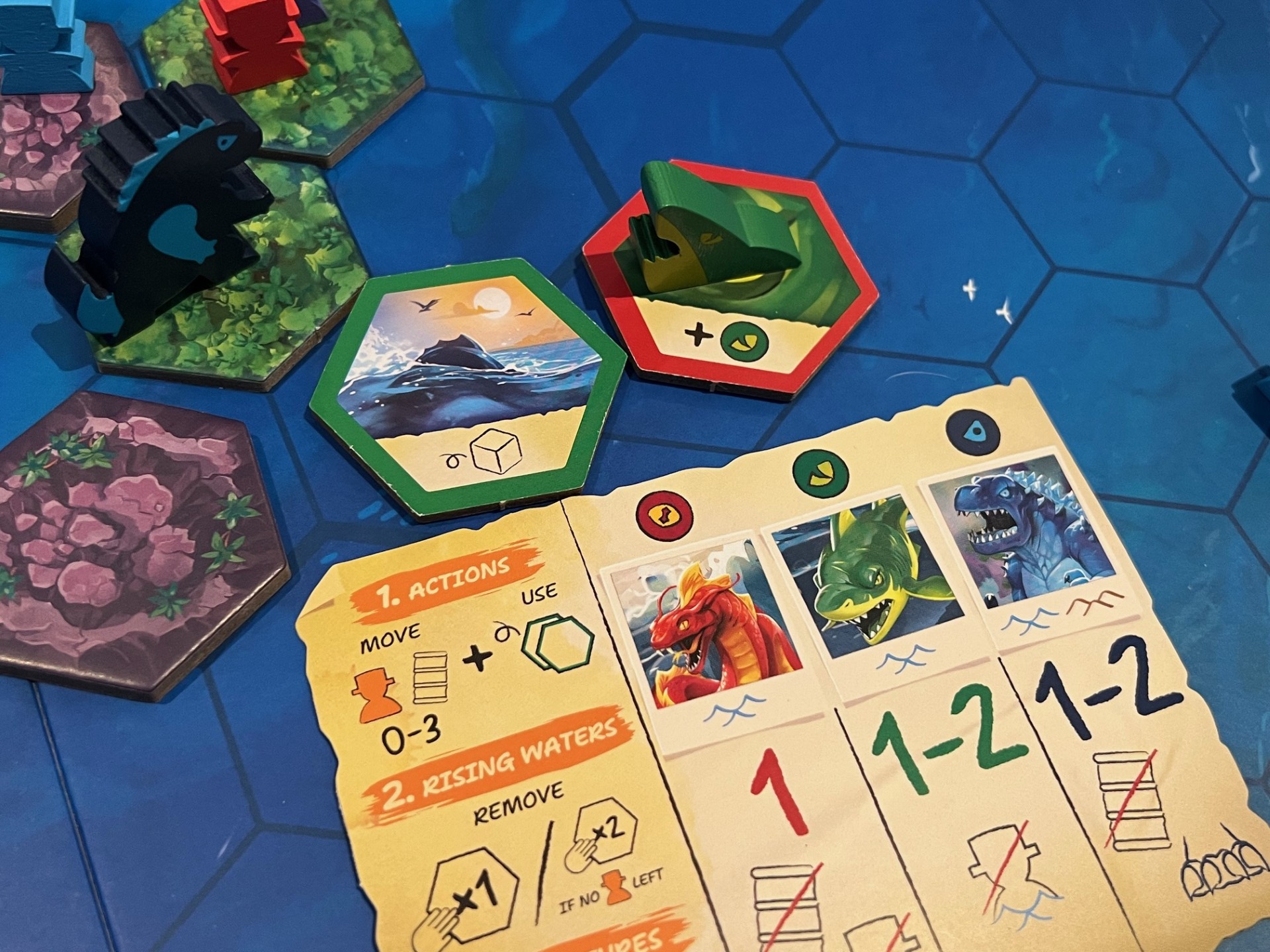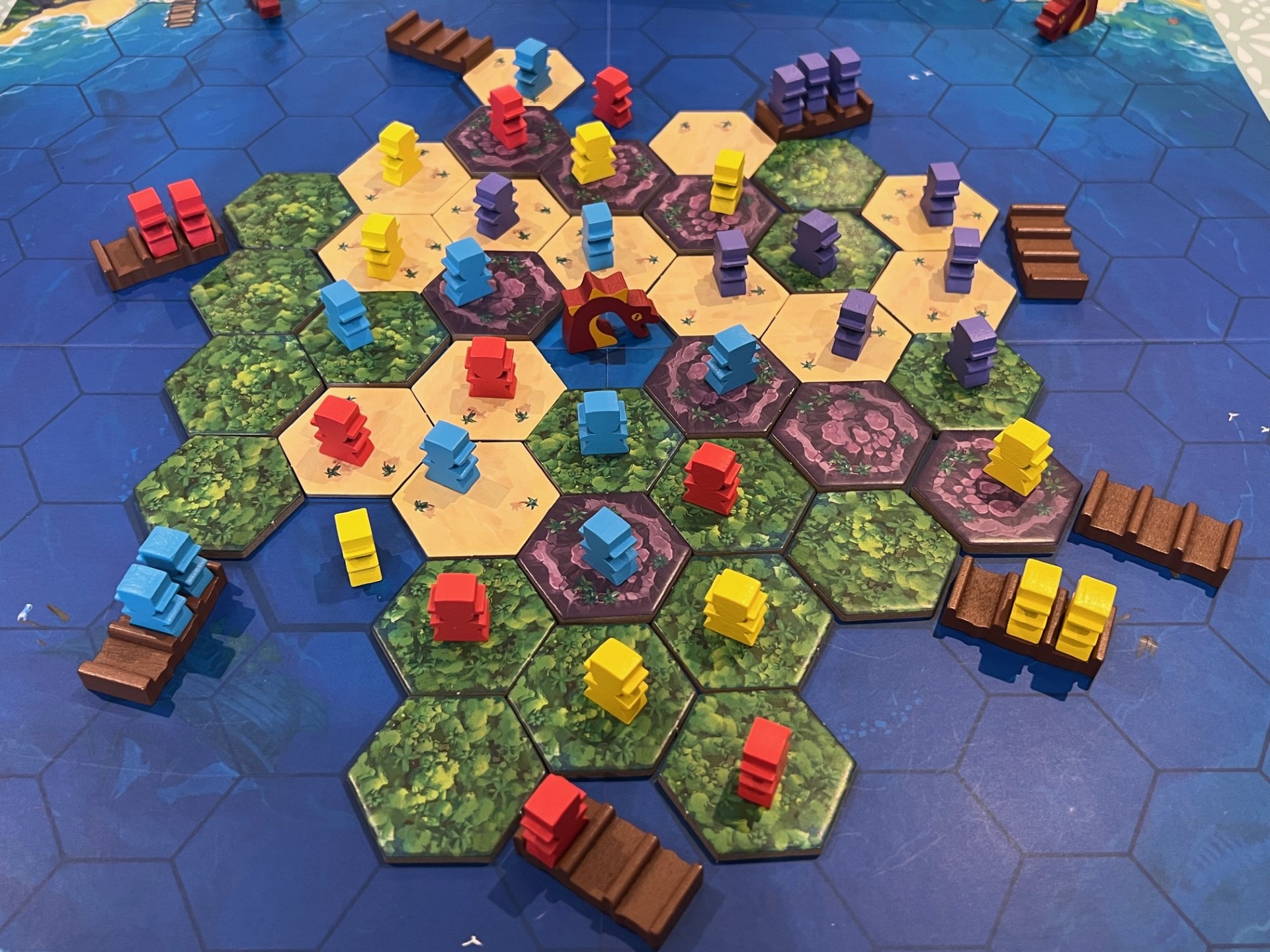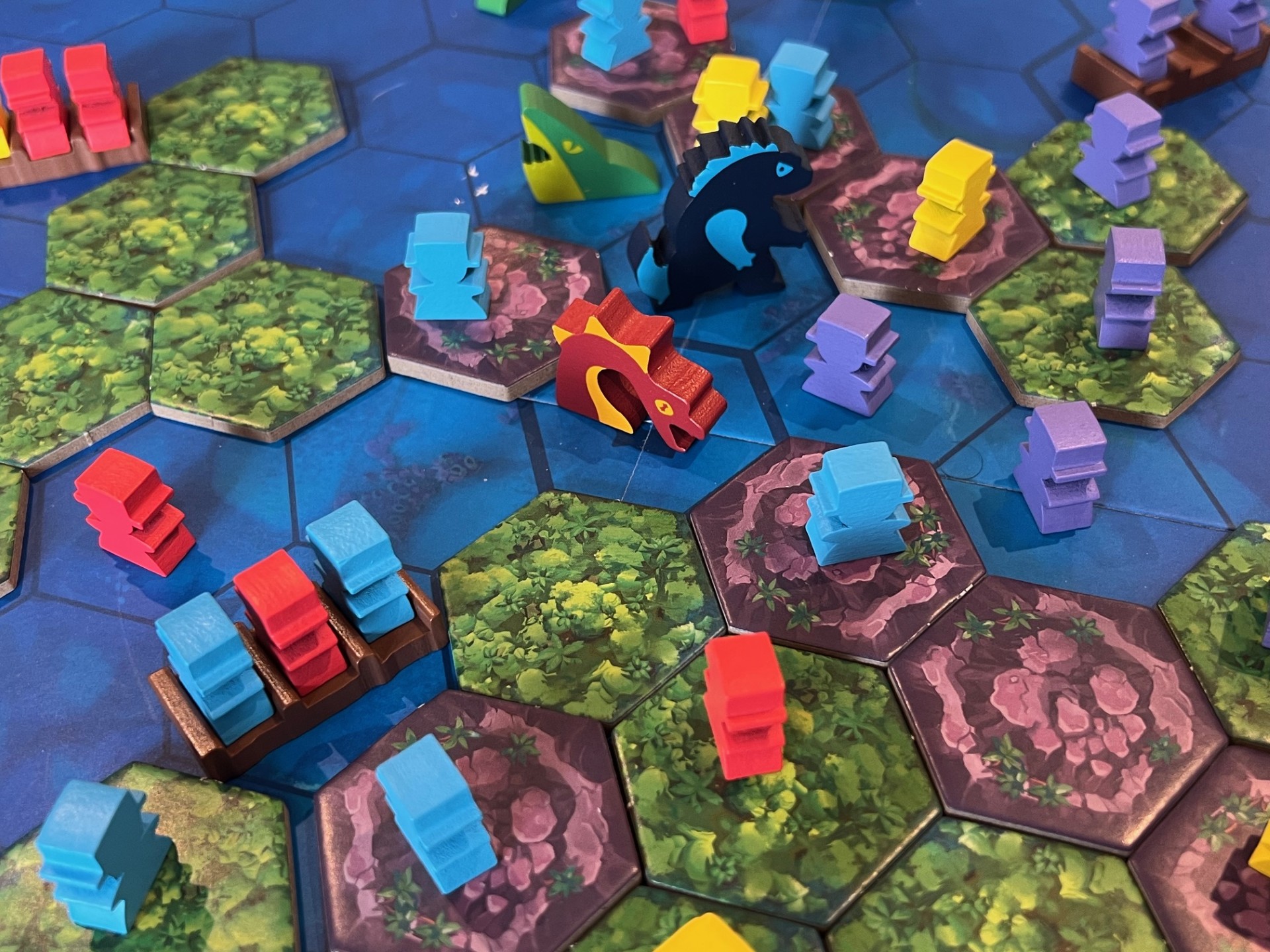Survive The Island rescues just the right amount of nostalgia!
For readers of a certain age, Survive: Escape from Atlantis will be a core memory. With its modular island made up of bright, plastic hexagons, this 1980’s classic is a game that I remember well. In keeping with the current fashion, Zygomatic has now revived the original game with a brand new, reworked release. This new game — known as Survive The Island — is the subject of today’s review.
In Survive The Island each of up to five players will choose a colour and take control of a handful of ten meeples. The board is placed in the centre of the table and then populated with beach, forest and mountain tiles — each of which has a different surprise printed on the back. On top of these, the players will take turns to place a single meeple in turn — rotating around the table until all meeples are placed.

The interesting bit about this setup is that each meeple has a number printed on the bottom of them, and the only time you can look at these numbers is before placement on the board. Why the numbers? Well, the object of Survive The Island is to get your meeples off, and each meeple is worth as many points as are printed on it, so the placement and mini-memory game is actually key to strategic success.
On a turn, a player will follow three steps: movement, rising waters and then rolling the monster die. The first of these steps is obvious enough — you just make three moves, whether that be moving one meeple up to three times, or moving up to three meeples once each. Meeples that are swimming in water can only move a maximum of once, but there are no other restrictions.

So far, we haven’t mentioned rafts either, and these are how your meeples will get from the island to one of the four safe spaces (on each corner of the board). If a player has “control” of a raft (which means that they have more meeples on it than anyone else) then they can move the raft in the same way as a meeple — ie one space at a time, up to three times in a turn.
With movement done, the player will then choose a tile to remove because of the thematic rising waters. Whilst tiles are placed at random during setup, they must be removed in a set order — with beach tiles going first, then forest, then mountain. If three volcano tiles are ever revealed, the end of the game will be triggered.

What makes rising waters interesting is that you can pick any tile of the available set, so if you wanted to take a tile that is currently housing a rival meeple, you can do so — dropping that meeple into the water and potentially into danger (as I’ll go into in a moment). Every tile has something on the back, from collectible benefits such as monster repellent or additional movement, to monster spawns, additional rafts and much more — these are usually resolved (or kept) as part of rising waters.
Next, the player rolls the monster die and depending on what is rolled and what is on the board, they will move the associated monster following the appropriate rules. Survive The Island has three types of monsters — sea monsters, kaiju and sharks. Sea monsters must stay on water but “destroy” any raft or meeple they meet, kaiju destroy rafts and displace other meeples or monsters (but don’t kill them) whilst sharks simply destroy meeples that are in sea spaces.

Just in case it isn’t obvious from the way I’ve described the rules, Survive The Island has a fair bit of meanness in it. The object of the game is to get as many of your meeples off the island and score as high as possible with them, but at the same time, each other player can — and indeed should — try to minimise their opponents chance of success. This isn’t for everyone, but it’s mega fun if all players approach the game in the right spirit.
Survive The Island tends to begin in a relatively friendly way, with mini alliances being formed and lots of table talk. As meeples either disembark the island (which happens a lot during the first few turns as the starting rafts are filled) or are killed, things start to get spicy. With say five or fewer meeples left, the stakes begin to rise along with the water — and as rafts become more and more scarce, so too does the competition.

Strategic use of monsters is key, as is removing island spaces at just the right time in order to slow down your opponents and potentially prevent them from reaching rafts. You’ll also occasionally have the opportunity to straight up eat one of your opponents — which you should always do. This is made a bit easier if the tile you flip happens to spawn a monster, since it’s not like you “chose” to eat them, but nonetheless, they will get eaten!
When the end of the game comes (just as often because everyone has either escaped or been killed as it is when a third volcano appears) the players simply need to count up how many points are on all of their escaped meeples. In my experience, the points tally can vary quite significantly from one game to another, mainly because there’s a lot of random factors in Survive The Island, and also because the way people play has a big role in the outcome.

We’ve played Survive The Island both with children under ten and adults who enjoy lighter, more casual games. In both cases we’ve had great success. The level of meanness that really makes Survive The Island explode with excitement takes some building up to, but once you get there this game is an absolute riot. Strategy often goes out of the window in favour of tit-for-tat retaliations and negotiating the ecosystem of temporary alliances and rivalries is just as important as your actual moves.
I have enjoyed Survive The Island a lot more than I thought I would. It may be based on a classic design, but Julian Courtland-Smith (who designed the original) and Zygomatic have updated the mechanics significantly, capturing the original theme and idea of the game, whilst radically modernising the way it plays. Survive The Island is a worthy addition to any collection if you want something light and fun, but just bear in mind the amount of interaction it requires to really sign.
Survive The Island is available on Amazon.
Comments are closed.